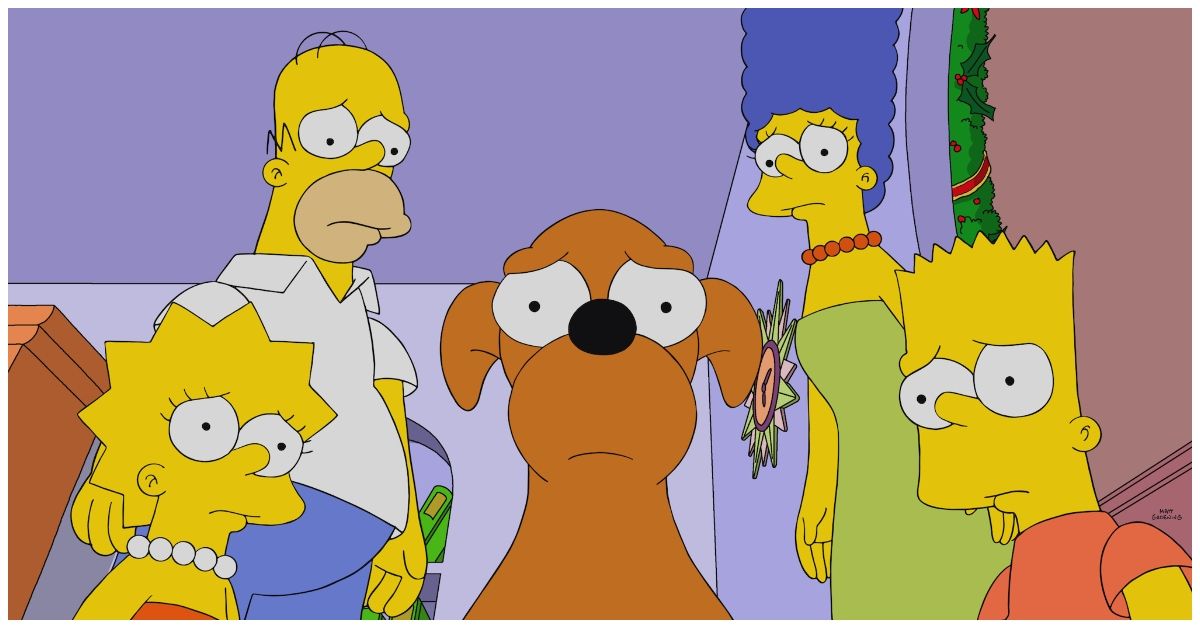There's basically no shortage of fans complaining that The Simpsons has seen a massive quality downturn. Episodes like the game-changing Monorail episode seem to be just a distant memory. As are hilarious gags such as the 'Steamed Hams' or even the Planet of the Apes parody musical which fans are still singing to this day. But the quality of the stories isn't the only thing that's changed about the hit Fox animated sitcom. The visual design of the characters and the town of Springfield has also had a major facelift.
Here's precisely why The Simpsons have gone through a few major animation changes and what that's meant for the show itself...
The Simpsons Animation Was Once Extremely Rough And Tedious To Make
If you go back to the true origin of The Simpsons, which were segments on the Tracey Ullman Show in 1987 -1989, it's easy to see the radical difference in visual style. According to an expose by Insider, the first incarnation of the famed animated family was very much a work in progress. The creator of The Simpsons, Matt Groening, had to draw the entire segments extremely roughly and animators such as David Silverman had to animate it. At this time, the creators of The Simpsons were also going for a hand-drawn look, which made the animation process far more tedious.
Due to the convoluted process of using animation cells and going for this hand-drawn look, it took the animators about 60 hours per week to do just one minute of the show.
The Simpsons characters also looked a lot rougher and more in-line with Matt Groening's style up and until that point, namely the "potato-chip lip" which was far more pronounced than it ended up becoming.
But as Matt's creations shifted to a full-on television series, he started to do-away with these looks. He also made the decision to give the characters four fingers instead of five as it reduced 'pencil milage'.
These decisions also fell in line with the desire to make the characters more rounded. This made them easier to move in the animated space as more angular figures are harder to turn and pivot on camera.
But because of the change in style it was harder for the animators to draw the characters consistently. This is why you see a lot of minor variations in the characters throughout the first few seasons of the show. For example, in one frame Bart may appear taller than in the next. Or Maggie's head might be larger.
A lot of this was more noticeable to fans because of the simplicity of the character's designs. Had they been created with far more detail, audiences might not have noticed the fluctuations. But if you change one minor thing in Lisa Simpson's visual design it's glaringly obvious.
One of the most noticeable changes was the character's pupils were drawn slightly too large in seasons 3, 4, and 5 in comparison to what came before and after.
In order to make things simpler for the animators, style guides were created for every single character. But this also limited what each character could physically do in the show. But this was also a stylistic choice by Matt Groening who wanted to stay away from the springiness of the Disney cartoons and the bendiness of the Bugs Bunny shows.
The Switch To Digital And HD
Up until Season 7, The Simpsons was using hand-painted cells for all of their episodes. But eventually, the animators wanted to experiment with new technologies for a couple of the show's sequences. This is when digital modeling came into play.
A few of the action sequences were designed and painted digitally to make them feel more fluid and some segments in the Halloween episodes were completely digital.
In 2002, a Halloween special where Homer was cloned presented the opportunity to move to digital animation almost completely. This is because they couldn't clone Homer more than a handful of times on hand-drawn cells as they are limited in space.
Because of how much time was saved and how much easier the animators found digital animation, the permanent change to this process was made. And this marked the biggest change in the visual style of The Simpsons. Of course, this wasn't without some artistic fumbles along the way. For instance, a few episodes had much more defined black borders around the characters and objects than what the animators had intended.
The switch to digital allowed the animators to add more detail in the color schemes as well as create more vivid and complicated backgrounds. Of course, this also meant that the stories could be larger as well and opened up the door to The Simpsons Movie in 2007.
The translation to a wide-screen movie format changed the style of The Simpsons drastically. In order to create The Simpsons movie, a blend of hand-drawn animations and CGI modeling was used. The use of shadow-vignettes were added to help focus the audiences' eyes on the subjects. This was necessary due to the 50-foot screens the characters were being projected onto.
The use of vignettes and shadows were seldom used on The Simpsons before 2007, but after the movie was released, they became a mainstay. This choice was vital the to next major visual change to The Simpsons... the switch to high definition in 2009.
Because so much more of The Simpsons' world was now visible thanks to HD, the animators couldn't reuse stock footage or backgrounds. Instead, they had to create everything from scratch. The switch to HD also made the creators have to change the aspect ratio of their frame, ultimately making the show a lot wider than it was. This is the main reason why so much of what you see on The Simpsons now looks drastically different than the original seasons.

